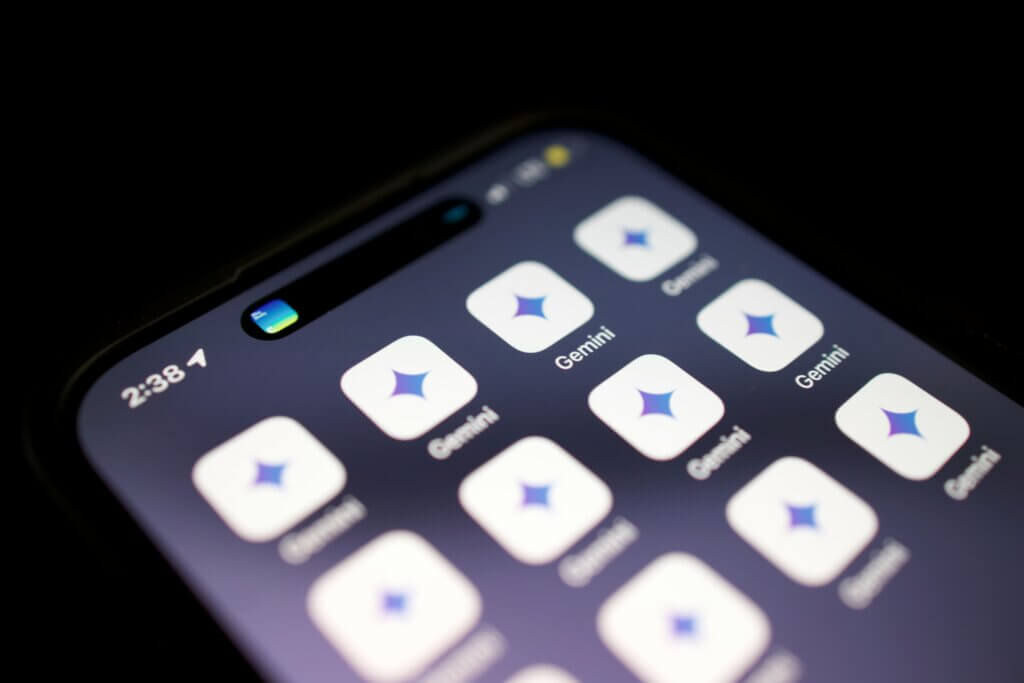Artificial Intelligence in HR: Examples, Statistics, How to Use it, & Where it’s Headed
AI is an exciting, evolving frontier in technology that most people are sick and tired of hearing about at this point. It can feel like AI is the catch-all solution for all of life’s problems, including your professional problems. There are myriad claims about what AI can do for HR management and talent management professionals, including how it can correct bias and discrimination in the workplace. However, as in most cases, there is some distance between the promises being made about what AI can do and what it actually delivers to businesses.
In fact, many job seekers and employees distrust AI when it comes to making (or influencing) decisions that affect their careers and livelihoods. The challenge for HR leaders is clear: How can you harness AI’s efficiencies without removing or sidelining the human judgment necessary to assess soft skills, build trust, and safeguard fairness?
Types of AI Used in Human Resources
First, let’s establish which types of AI are currently being used in HR, each of which comes with its own distinct capabilities and risks.
- Robotic Process Automation: Automates repetitive, rule-based tasks like interview scheduling, enrollment reminders, and data entry. RPA frees up HR staff to focus on more person-to-person work, but exceptions still need escalation pathways.
- Generative AI: Drafts job descriptions, onboarding emails, policy briefs, and training content. While this speeds up document creation, it can be tone-deaf, so always review and humanize AI-generated content to preserve brand authenticity.
- Predictive Analytics: Learns from historical HR data to predict candidate success, turnover likelihood, staffing needs, and more. This enables more proactive talent management, but can perpetuate past biases if training data lacks diversity.
Learn more about all of the categories of AI here.
How is AI Used in Recruitment?
AI touches every stage of the HR cycle, but this typically starts with recruitment. For example, artificial intelligence is now used for resume screening, candidate matching, interview scheduling, and more. However, candidates understandably have concerns about this because algorithms often feel opaque. To back this up, 84% of job seekers prefer a human review of their resume and cover letter. The same percentage said that they prefer having an initial interview conducted by a person, even if the questions are basic or introductory.
According to an Express Employment Professionals-Harris Poll survey, 62% of U.S. job seekers would consider not applying to companies that overly rely on generative AI during recruitment. In fact, that same study found that 73% believe that the risks of using AI in recruitment outweigh the benefits.
Best Practices
To take advantage of AI’s benefits (more on this below) without removing the human element from recruitment, make sure to clearly disclose any AI use or assistance. For example, denoting that, “Your resume will be initially screened by an AI tool.” It’s also important not to solely rely on AI for any major decisions, especially for roles that require high emotional intelligence. Instead, use a hybrid approach that combines AI’s speed with human review and oversight.
How is AI Used in Employee Onboarding?
AI can make onboarding a smoother process, but can’t replace human rapport and empathy. It can be used for automated provisioning, such as triggering account creation, equipment ordering, and access requests based on role and/or locations. Another use case might be tailoring onboarding journeys for new hires by suggesting training modules, sending reminders, and even scheduling meetings with their manager or team.
More basic AI systems like RPA might monitor feedback survey responses to check sentiment and engagement, prompting someone to personally reach out if a new hire is struggling. Custom chatbots for your company can answer FAQs about benefits, policies, IT troubleshooting, and more in real time. Again, more complex (or sensitive) questions should be escalated to HR representatives instead of a robot.
Best Practices
As with recruitment, the key is to blend automation with human empathy. Use AI for logistics, but schedule a welcome coffee or lunch to build relationships. You can also reinforce AI-guided checklists with manager-led goal-setting to customize touchpoints and personalize the onboarding experience to each new hire.
How is AI Used in Professional Development?
AI can identify and help tailor growth pathways, but many skills (especially soft skills) require human guidance to nurture. Predictive analytics algorithms in professional development have become increasingly efficient at forecasting potential skill gaps to proactively recommend training investments. AI can also personalize learning paths by matching employees to relevant courses, webinars, or challenge assignments based on skill gaps and career goals. Having effective professional development programs, whether they leverage AI or not, is one of the top ways to retain talent and reduce employee turnover.
Best Practices
While we’re not there yet, there is a future where artificial intelligence can act as virtual coaches or mentors to provide real-time feedback and learning suggestions. However, this is not feasible with current tools, so emphasize the importance of human mentorship and instead use AI to pair employees with experienced mentors who understand team dynamics. AI also shouldn’t replace or take over one-on-one career planning discussions, but they might be valuable to inform talking points (or take notes).
How is AI Used in HR Management?
AI can help streamline basic HR operations, but it still cannot replace human empathy and emotional intelligence. For example, HR management software is incorporating AI to collect feedback, goal progress, and peer reviews into dashboards to analyze performance. This makes it easier for HR professionals to spot high-performers and at-risk teams, but managers need to lead the conversations stemming from these insights. AI-powered HRM tools could also use predictive analytics to forecast hiring needs, attrition risks, and budgeting scenarios for different market conditions. All of these integrations of artificial intelligence can make teams more efficient, but the core is still human resources.
Best Practices
We recommend looking for software that uses Explainable AI (XAI) and offers transparency into how recommendations are generated. This instills confidence in the AI from both HR professionals and employees that the algorithm isn’t an opaque black box that no one can figure out how it reached certain conclusions. HRM also benefits from cross-functional teams validating AI-proposed plans to ensure a more collaborative and balanced review process.
Benefits of AI in HR
There’s a good reason AI has been a tech trend with staying power. It can play a powerful role in identifying DEI issues within an organization, as well as mitigating bias in existing processes. For example, some algorithms can help mitigate bias in assessments (like cognitive testing) in the recruitment process. AI may also help surface trends of bias internally, such as patterns in performance review data that might be red flags for biased reviewing and promoting.
However, current HR professionals believe that AI’s impact on HR reporting is its greatest benefit. Due to the centralization and consolidation of HR processes and data flows into unified platforms, HR departments have better access to more data than ever before. Algorithm-powered reporting tools provide the additional horsepower necessary to process and glean actionable insights from the mountain of data. In other words, AI can enable HR departments to use data more “intelligently,” and with more awareness of how bias could enter decision-making.
Risk and Challenges
However, there are limits to how intelligently algorithms can operate. If not deployed correctly, AI can be underused at best, and perpetuate bias in processes at worst. The main flaw of AI is that it’s subject to the people who create the algorithm, or who populate it with training data. Algorithms get “smart” by learning from preexisting data and determining trends, patterns, and behavior from that information. If algorithms learn from biased data (e.g. certain demographics not getting promoted or hired, or receiving poor performance reviews), they can easily pick up and “learn” that same bias. Other hurdles faced by HR teams considering implementing AI into their processes include:
- Distrust: As we’ve discussed, many candidates distrust AI tools and may entirely avoid AI-heavy employers, so transparency and human checkpoints are a must.
- Privacy: Handling sensitive data like resumes, interviews, performance reviews, etc. demands clear opt-in policies and robust security practices.
- Erosion of Soft Skills: Those who overrely on AI screening may end up undervaluing empathy, creativity, and cultural fit, so human-led assessments are non-negotiable.
- Change Management: Employees may resist what they perceive as “surveillance,” so involve stakeholders early and often to communicate AI’s supportive role.
How Should You Use AI in HR?
Regardless of how you may feel about AI as a trend, it is becoming an inevitable part of HR professionals’ lives. AI has quickly become a core part of HR analytics, and if businesses aren’t already adopting HR analytics platforms, they’re behind the curve. HR isn’t solely a soft-skills profession, and has adopted a more analytical approach that is sweeping most professions.
The ability for AI to be more of a benefit than a hindrance comes down to you. If (and likely, when) you use algorithm-based programs, you have to be aware of how and why decisions are being made, and come up with objective criteria to drive decisions. Disclose, educate, and keep humans in the loop for approving decisions.
People are complex — you need other people to address and correct these challenges.
Future of AI in HR
As this technology advances, we’ll likely see increased use of AI copilots to handle routine interactions while humans focus on more judgment-intensive tasks. However, adoption of this will rely heavily on the evolution of ethical AI frameworks that follow standards for transparency, accountability, and fairness. HR roles might expand to create new hybrid positions like AI Ethics Officer or HR Data Strategist that bridge the gap between technology and people-centered values. Lastly, we’ll see the trend of personalization continue as AI can tailor experiences in real time based on data-driven decisions. Hopefully, this continues to grow and provide each person with a more individual, helpful, and meaningful experience in the workplace.
AI Tools for Human Resource Professionals
AI is cementing its place in HR, but keep in mind that its full promise lies in a balanced partnership with human expertise. HR software is progressing quickly to incorporate advanced features so we can make the most of our teams. If you want to invest in the cutting edge of HRM or talent management software, TrustRadius is the ideal place to organize your research. With hundreds of thousands of reviews, you can find insights from relevant industries and companies to compare potential tools. Ready to start looking? Browse our categories below:













